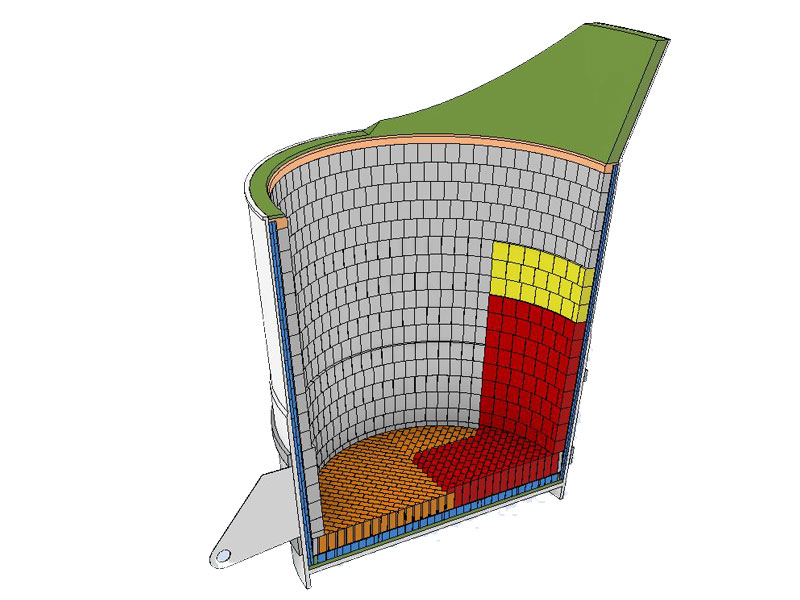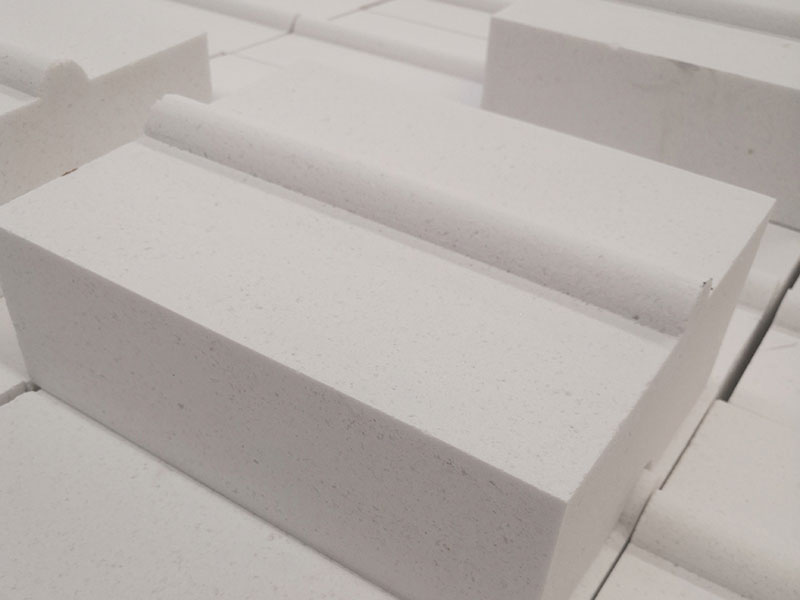News detail
Ladle refractory material – breathable brick
Breathable brick is a key functional component of the ladle refining process. It is mainly used to stir the molten steel, homogenize the composition, remove impurities and gases by blowing gas (such as argon) into the molten steel during the ladle refining process. Blowing argon through the breathable brick can cause strong stirring of the molten steel, accelerate the diffusion and mixing of various elements in the molten steel, ensure the uniformity of the molten steel composition, and improve the stability of the steel quality. The blown gas forms bubbles, and the gases such as hydrogen and nitrogen in the steel and the inclusions will adhere to the surface of the bubbles. As the bubbles float to the surface of the molten steel, they are removed, thereby reducing the gas content and the number of inclusions in the steel and improving the purity of the steel.

Type
According to the form of gas channel, breathable bricks are mainly divided into diffuse type, straight-through directional type, and slit directional type. The diffuse structure has fine and continuous pores, high porosity, but low density and strength, and poor durability; the straight-through directional type is made by embedding varying numbers of thin steel pipes in the brick. There are also directional air-permeable bricks that use special hole-forming technology without thin steel pipes. The pore size is generally between 0.6mm and 1.0mm. The flow and distribution of the gas are reasonable, the bottom blowing effect is good, and the service life is long, but it is easy to clog in the later stage, affecting the blowing rate; the slit directional air-permeable brick is formed as a whole with the embedded material during the molding process. During the high-temperature firing process, the embedded material is heated and melted and volatilized to form a slit. The gas enters the ladle molten pool through the slit. The appropriate slit width can ensure low argon blowing intensity, control and adjust the flow rate, and avoid the risk of penetration and blockage.
According to the installation method, there are integral air-permeable bricks and external air-permeable bricks. The integral air-permeable brick has a high safety factor, a long service life, and is easy to install, but difficult to replace. It is suitable for process conditions where the argon blowing time is low and the life of the air-permeable brick can be synchronized with the life of the ladle. Externally installed air-permeable bricks are easy to replace, but due to the installation equipment attached, the structure is relatively complex, and the on-site installation quality requirements of the brick core are high, which is easy to cause human operation accidents. It is suitable for process conditions where the argon blowing time is long and the air-permeable bricks are frequently replaced, especially for refining ladles.
Material
The materials of air-permeable bricks are mainly sintered magnesia, magnesia-chromium, high alumina and corundum. Sintered magnesia materials refer to refractory materials with a MgO content of more than 80%. They belong to alkaline refractory materials and have the advantages of high refractoriness, strong resistance to alkaline slag erosion, no erosion by Ca and CaO, and no pollution to molten steel. However, their thermal expansion coefficient is large and their thermal shock resistance is poor, which makes the material easy to peel off, which greatly reduces the service life of magnesia refractory materials.
Magnesia-chromium materials are refractory materials with MgO and Cr₂O₃ as the main components and periclase and spinel as the main mineral components. Chromium ore is inert to steelmaking slag and compatible with other refractory materials. Therefore, the emergence of magnesium-chromium materials has greatly improved the shortcomings of magnesium materials in thermal shock resistance, but chromium may cause environmental pollution.
High-alumina materials refer to refractory materials with an Al2O2 content greater than 48%. They have the characteristics of high cold and hot strength, good wear resistance, thermal shock resistance, spalling resistance, and good volume stability at high temperatures. However, their resistance to slag erosion and penetration is poor, which is not enough to resist the infiltration and penetration of slag into bricks during the entire service.

Corundum materials refer to refractory materials with an Al2O2 content greater than 90%. Corundum is made from industrial alumina or bauxite after sintering or electric melting. Under high temperature and vacuum, the wetting angle of molten steel to several refractory oxides is in the following order: Cr₂O₃>Al₂O₃>MgO, and the stability of the oxides is in the following order: Al₂O₃>CaO>MgO>Cr₂O₃. Considering the above two points, using corundum as the main crystal phase of the breathable brick is a better choice. The introduction of Cr₂O₃ in appropriate amounts can improve the thermal shock stability, erosion resistance and corrosion resistance of the material.

Advantages of breathable bricks
Improve the quality of molten steel
Bottom blowing argon stirring through breathable bricks can effectively promote the homogenization of the composition of molten steel and avoid the phenomenon of component segregation. When producing alloy steel, various alloy elements can be evenly diffused into the molten steel to ensure the consistency of steel performance. At the same time, it can accelerate the removal of harmful gases and inclusions in the molten steel, improve the purity of the steel, and meet the strict requirements of high-end steel for purity, such as the production of high-end bearing steel, automotive steel, etc.
Optimize smelting process
The use of air bricks helps to optimize the reaction of steel slag. The air bricks are installed at the center of the bottom of the ladle. Bottom argon blowing is beneficial to the reaction between the ladle slag and the desulfurization reaction of the top slag; while eccentric bottom argon blowing is beneficial to the mixing inside the ladle, temperature uniformity and inclusion floating. Reasonable air brick position selection and argon blowing operation can improve the reaction efficiency between steel slag, promote the desulfurization, deoxidation and other refining reactions, reduce refining time and improve production efficiency.
Reduce production costs
High-quality air bricks have a long service life and reduce the replacement frequency of air bricks. Taking the air bricks produced by Dalian Tianzhi Refractory Material Factory as an example, they are used in various refining ladles of 15-100 tons. Due to the increase in the number of air bricks used, the number of times the ladle is replaced with air bricks is greatly reduced, the number of times the ladle is re-baked is relatively reduced, and the amount of gas consumption is inevitably reduced. At the same time, the number of times other refractory materials are subjected to rapid cooling and heating will also be reduced, which has a significant effect in energy saving and consumption reduction.
Improve the life of ladle
The good corrosion resistance and thermal shock resistance of air bricks can reduce the scouring and erosion of the ladle lining by molten steel and slag, protect the ladle lining, extend the overall service life of the ladle, reduce the cost of ladle maintenance and replacement, and improve the continuity and stability of production.
As a key component of ladle refractory materials, air bricks have significant advantages in improving the quality of molten steel, optimizing smelting processes, reducing production costs and increasing the life of ladle due to their unique structure and performance characteristics, and have played an important role in promoting the high-quality development of the steel industry. With the continuous advancement of technology, the performance and application effect of air bricks will continue to improve.


Send inquiry
Please Leave your message you want to know! We will respond to your inquiry within 24 hours!